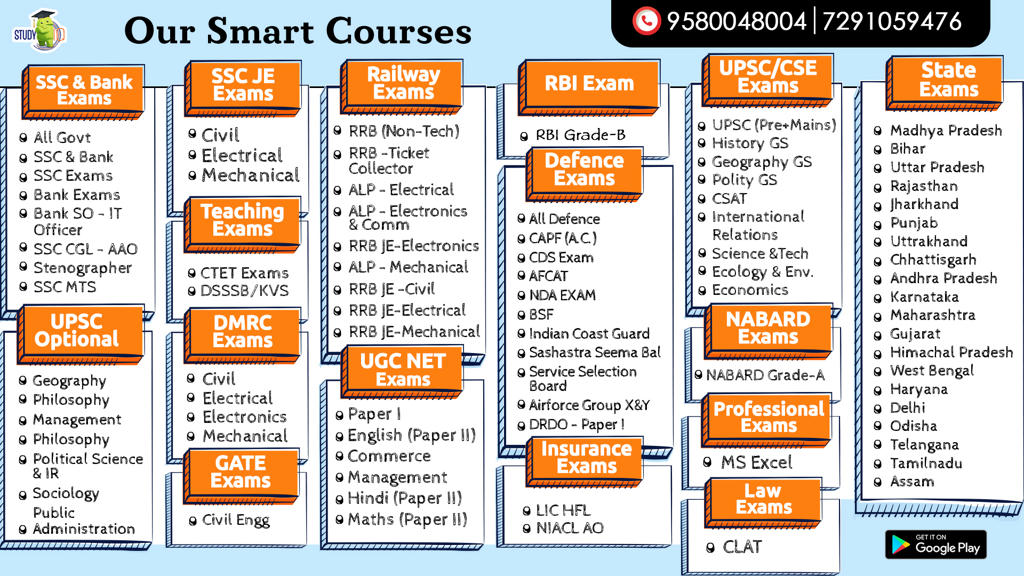Table of Contents
PADMA VIBHUSHAN
- Archaeologist Braj Basi Lal who led an excavation at the Ramjanmabhoomi site in the mid-1970s in among those honoured with the Padma Vibhushan this Republic Day. Lal was the director general of the Archaeological Survey of India between 1968 and 1972, and has worked extensively on archaeological sites associated with the Harappan civilisation and the Hindu epic Mahabharata. He has also served on several UNESCO committees and was awarded the Padma Bhushan by the president of India in 2000. He is best known for his theory of a temple-like structure underneath the now demolished Babri mosque.
Who is B B Lal?
- Lal was born in 1921 at Jhansi in Uttar Pradesh and is currently a resident of New Delhi.
- He developed an interest in archaeology after completion of his Masters degree in Sanskrit from Allahabad University.
Who is B B Lal?
- In 1943, he served as a trainee in the excavation under the renowned British archaeologist Mortimer Wheeler and began his career as an archaeologist from the site of Taxila. In the course of over 50 years, Lal worked on over 50 books and 150 research papers published in national and international journals. Some of his most notable books include, ‘The Saraswati flows on: The continuity of Indian culture’ published in 2002 and ‘Rama, his historicity, mandir and setu: Evidence of Literature, Archaeology and other Sciences’ published in 2008.
Who is B B Lal?
- Between 1950 and 1952, Lal excavated a number of sites associated with the Mahabharata. Consequently, he discovered a number of Painted Grey Ware sites in the Indo-Gangetic divide and upper Yamuna-Ganga Doab. In a paper he wrote about twenty years later in 1975 titled, ‘In search of India’s traditional past: Light from the excavations at Hastinapura and Ayodhya’, he summarised his findings as “the available archaeological evidence tends to indicate there did exist a basis for the Mahabharata story which no doubt got immensely inflated during the course of time.”
What were his findings in the Ramjanmabhoomi site in Ayodhya?
- On the lines of the investigations carried out in the Mahabharata sites, Lal commenced on another project in 1975 titled, ‘Archaeology of the Ramayana sites’. The project was funded by the ASI, Jiwaji University, Gwalior and the Department of Archaeology in the government of Uttar Pradesh.
- The project was inaugurated at Ayodhya on March 31, 1975. It excavated five Ramayana related sites including, Ayodhya, Bharadwaj Ashram, Nandigram, Chitrakoot and Shringaverapura.
What were his findings in the Ramjanmabhoomi site in Ayodhya?
- In his 1975 paper, Lal wrote about the ongoing excavation at Ayodhya: “the excavations so far conducted at Ayodhya do not indicate the beginning of the site before 8th century BC.”
- While he mentioned the discovery of coins and pottery at Ayodhya in this paper, no mention was made of the temple remains then.
What were his findings in the Ramjanmabhoomi site in Ayodhya?
- However, in 1990, Lal wrote of the ‘pillar-base theory’ on the basis of his excavations. He claimed to have found temple-like pillars which would have formed the foundation of the Babri Masjid. Lal’s findings were carried in the BJP-affiliated magazine, Manthan.
- In his 2008 book titled, ‘Rāma, His Historicity, Mandir and Setu: Evidence of Literature, Archaeology and Other Sciences,’ he wrote, “attached to the piers of the Babri Masjid, there were twelve stone pillars, which carried not only typical Hindu motifs and mouldings, but also figures of Hindu deities. It was self-evident that these pillars were not an integral part of the Masjid, but were foreign to it.”
Latest Burning Issues | Free PDF

























 WhatsApp
WhatsApp